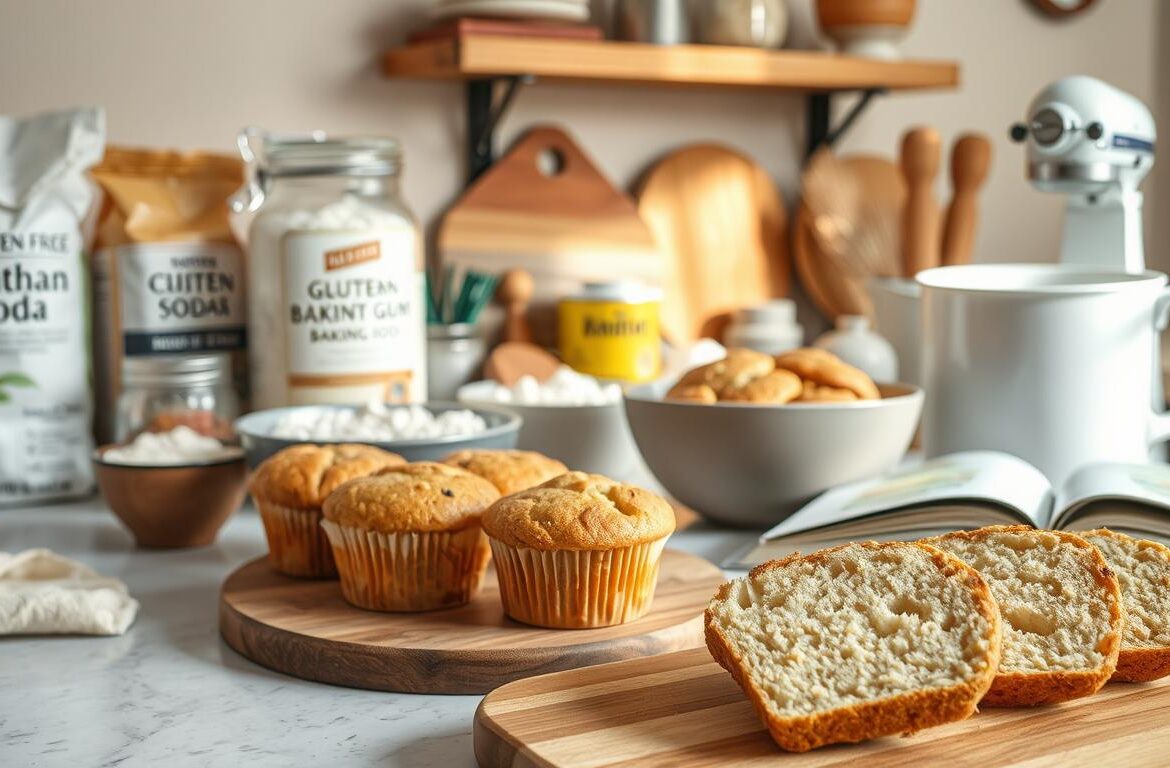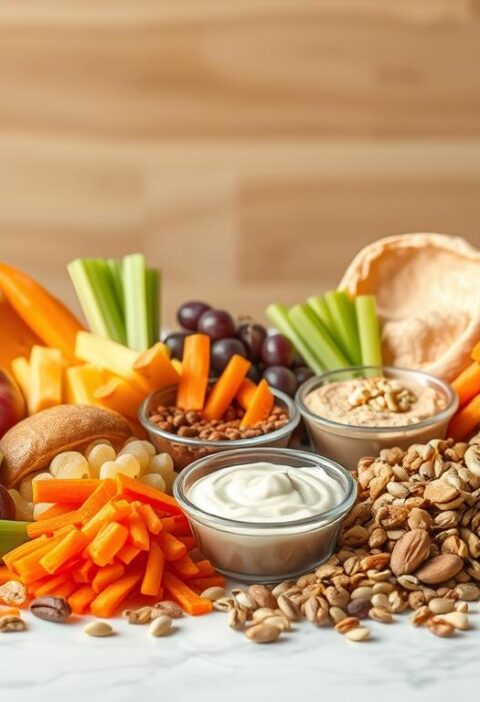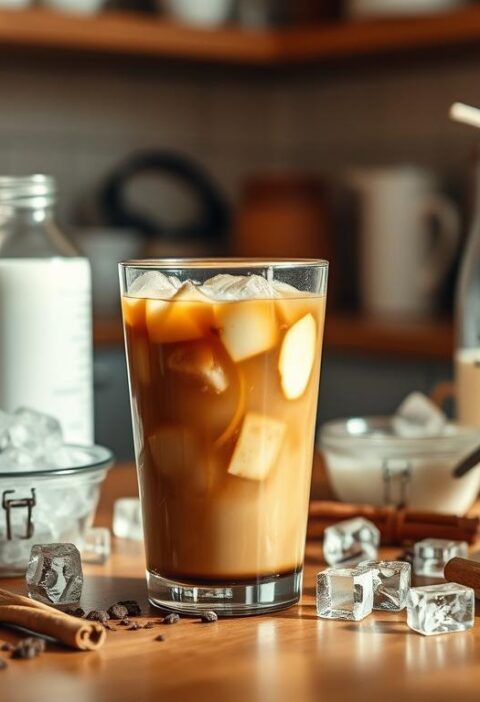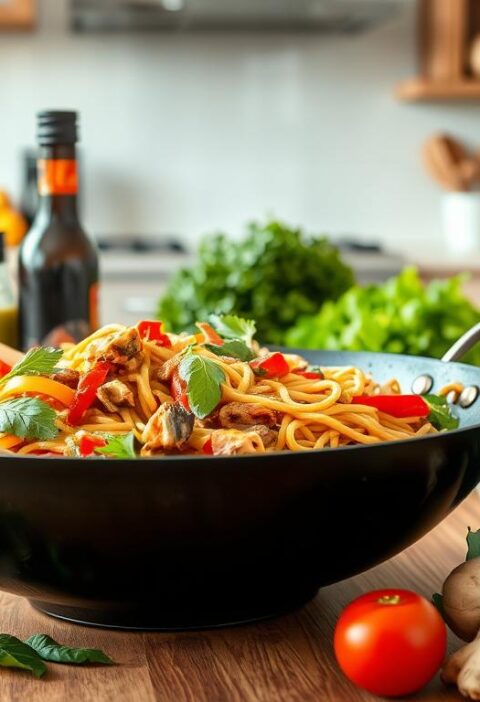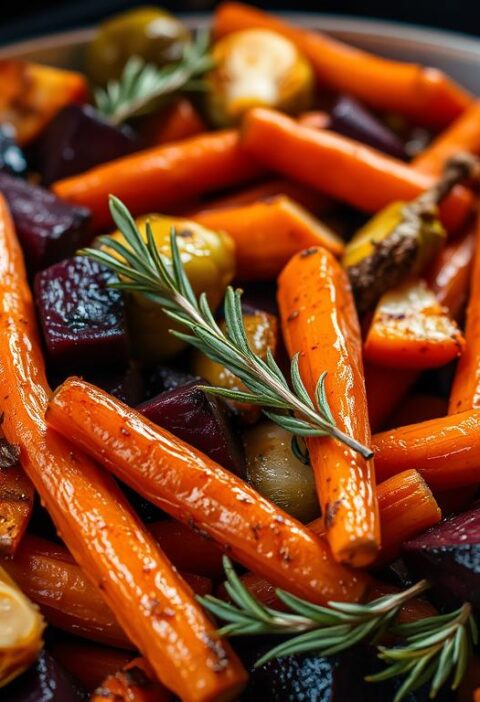Imagine biting into a warm, fresh loaf of bread. It’s not only tasty but also safe for your diet. For those new to gluten-free baking, this might seem hard. But with the right ingredients and practice, you can make delicious treats for everyone.
Good recipes and quality ingredients are key to gluten-free baking success. As a beginner, knowing the right ingredients is vital. It helps you get the perfect texture and taste.
Key Takeaways
- Understand the basics of gluten-free baking
- Learn how to choose the right ingredients
- Discover simple tips for achieving the perfect texture
- Explore beginner-friendly gluten-free recipes
- Master the art of gluten-free baking with practice
Understanding Gluten and Why It Matters
For those new to gluten-free baking, knowing about gluten is key. Gluten is a protein in some grains. It can harm people with gluten intolerance or celiac disease.
What Is Gluten and Where Is It Found?
Gluten is mainly in wheat, barley, and rye. It makes dough stretchy and helps it rise. But for those with gluten issues, it can be very harmful.
Gluten-containing grains and their derivatives
Common grains with gluten include:
- Wheat (including spelt, kamut, and durum)
- Barley
- Rye
- Triticale (a mix of wheat and rye)
Also, things like malt from barley have gluten. Knowing this helps keep your diet gluten-free.
Knowing the dangers of gluten helps you choose better foods. For those with celiac disease, even a little gluten can hurt the small intestine. Choosing wheat-free desserts and recipes is a good start for avoiding gluten.
Learning about gluten helps you in gluten-free baking. This knowledge is vital for making tasty, safe treats for those with gluten issues.
Essential Gluten-Free Flours and Ingredients
Gluten-free baking needs the right flours and ingredients. There are many gluten-free flours. They come in different flavors and textures. You can make tasty baked goods with them.
Popular Gluten-Free Flour Alternatives
Many gluten-free flours are popular for their special qualities. Knowing these alternatives is important for making gluten-free recipes.
Rice flour, almond flour, coconut flour, and their uses in celiac recipes
Rice flour is great for baked goods that need to be light. Almond flour adds a nutty taste and is rich in fat. It’s perfect for moist desserts. Coconut flour is low in carbs and soaks up a lot of moisture. It’s good for wheat-free desserts.
| Flour Type | Flavor Profile | Best Used For |
|---|---|---|
| Rice Flour | Neutral | Cakes, Cookies |
| Almond Flour | Nutty | Desserts, Cakes |
| Coconut Flour | Coconut-flavored | Low-carb Desserts |
Try out these flours to find the best mix for your gluten-free baking. The secret to great gluten-free baking is knowing each flour’s traits. And how they work together in recipes.
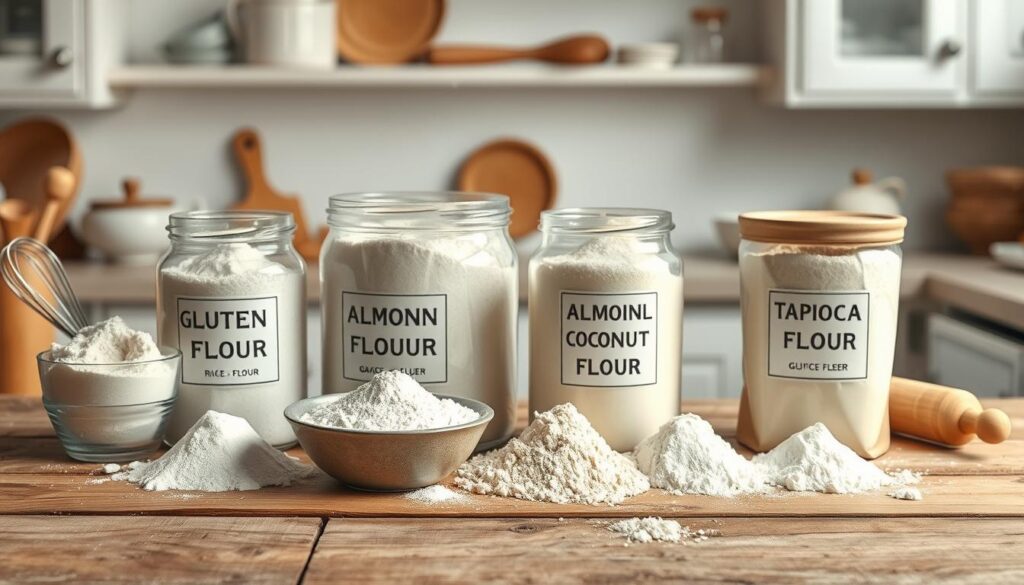
Building Your Gluten-Free Baking Pantry
A well-stocked gluten-free baking pantry is key for tasty results. You’ll need various ingredients for gluten-free baking. These include gluten-free flours, starches, and more. They help make gluten-free baked goods similar to those with gluten.
Having the right pantry staples is important. It lets you try new recipes and get good results. Whether you’re baking bread, cakes, or pastries, a good pantry is essential.
Must-Have Ingredients for Successful Results
Some ingredients are must-haves for gluten-free baking. Xanthan gum and guar gum improve texture and structure. You’ll also need gluten-free flours and starches like almond flour and tapioca starch.
Xanthan gum, guar gum, and other essential ingredients for gluten-free baking
Xanthan gum and guar gum are key for gluten-free baking. Xanthan gum helps with texture and structure. Guar gum is good for cold recipes. Together, they make gluten-free baked goods feel like the real thing.
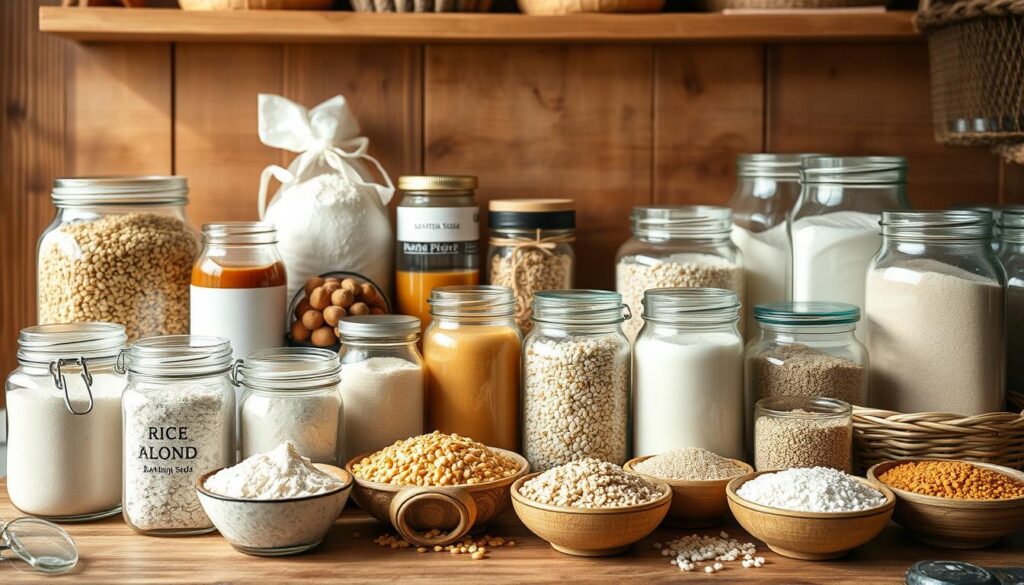
Other important ingredients include different flours and starches. Adding these to your pantry helps you make great gluten-free baked goods. For a full gluten-free baking guide, learning how to use these ingredients is key.
Equipment and Tools for Gluten-Free Baking
To succeed in gluten-free baking, the right tools are key. The quality and accuracy of your tools greatly affect your baked goods.
Essential Kitchen Tools
Some kitchen tools are must-haves for gluten-free baking. A digital kitchen scale is vital for exact measurements. Gluten-free recipes need precise ingredient ratios.
Digital Kitchen Scale, Mixing Bowls, and Measuring Cups for Baking Tips
Here are the essential tools you’ll need:
- A digital kitchen scale for precise measurements
- Mixing bowls that are large enough to accommodate your ingredients
- Measuring cups for double-checking measurements
Using these tools well can enhance your baking tips and results. For example, a digital kitchen scale ensures accurate ingredient measurements. This is critical in gluten-free baking.
| Tool | Purpose | Benefit |
|---|---|---|
| Digital Kitchen Scale | Accurate measurement of ingredients | Ensures precise ratios for gluten-free recipes |
| Mixing Bowls | Combining ingredients | Provides enough space to mix ingredients thoroughly |
| Measuring Cups | Double-checking measurements | Adds an extra layer of accuracy to your baking |
Mastering Gluten-Free Baking Techniques
The art of gluten-free baking is all about moisture control and adjusting texture. Gluten-free baked goods are different from traditional ones. They need a special touch to get the right results.
Adjusting Moisture and Texture
Gluten-free flours soak up more liquid than regular flours. This makes moisture control key in gluten-free baking. You must adjust the flour ratio and add more liquid as needed.
Tips for achieving the right consistency in gluten-free baking
- Start by using the right ratio of gluten-free flours, as different flours absorb liquid differently.
- Add more liquid gradually, as needed, to achieve the desired consistency.
- Be mindful of the type of liquid you’re adding; for example, using buttermilk or yogurt can add moisture and tenderness.
- Don’t overmix your batter, as this can lead to tough, dense baked goods.
By mastering these gluten-free baking techniques, you’ll make tasty wheat-free desserts. Remember, it takes practice to get it right. Don’t get discouraged if it takes a few tries.
With patience and practice, you’ll get better at making gluten-free baked goods. You’ll learn to control moisture and adjust texture. This way, you can make treats that everyone will love.
Beginner-Friendly Gluten-Free Recipes
Starting gluten-free baking can be exciting and a bit scary. But, with the right recipes, you’ll soon be baking like a pro. Gluten-free baking is all about trying new ingredients and techniques. We’ll look at some easy recipes to help you start.
Simple Gluten-Free Bread
Baking bread is a classic, and you can make a tasty gluten-free loaf with a few changes. The trick is to mix gluten-free flours for the right texture. A simple gluten-free bread recipe is a great first step.
To make simple gluten-free bread, you’ll need:
- 2 cups of gluten-free all-purpose flour
- 1/2 cup of almond flour
- 1/4 cup of coconut sugar
- 1 teaspoon of salt
- 1 tablespoon of xanthan gum
- 1 packet of active dry yeast
- 1 cup of warm water
- 2 tablespoons of olive oil
Easy gluten-free bread recipe for beginners, a great addition to any gluten-free baking guide
Here’s a simple recipe to start with: Mix the dry ingredients (gluten-free flour, almond flour, coconut sugar, salt, and xanthan gum) in a big bowl. In another bowl, mix yeast with warm water and wait 5 minutes. Then, add the yeast mix and olive oil to the dry ingredients and mix until it forms a dough.
Knead the dough for 10 minutes until it’s smooth. Put the dough in a greased loaf pan and let it rise for an hour, or until it doubles in size. Bake at 375°F (190°C) for 35-40 minutes, or until it’s golden.
This gluten-free bread recipe is easy to follow and tastes great, perfect for sandwiches or toast. As you get better at gluten-free baking, try new ingredients and recipes. This is a great starting point for your gluten-free baking guide.
By following this simple recipe, you’ll be well on your way to making many gluten-free baked goods. Remember, the key to gluten-free baking is to keep trying new things. Happy baking!
Your Path to Gluten-Free Baking Success
Learning to bake gluten-free takes patience and practice. You need the right techniques too. By mastering gluten-free flours and building your pantry, you’re on the right track.
Remember to adjust moisture and texture in your recipes. Don’t be afraid to try new ingredients and techniques. With these tips, you’ll make delicious gluten-free treats fast.
Keep practicing as you go on your gluten-free baking journey. Don’t get discouraged by failures. They’re chances to learn and get better. With this guide, you’ll soon be a pro at making gluten-free goodies that everyone loves.

